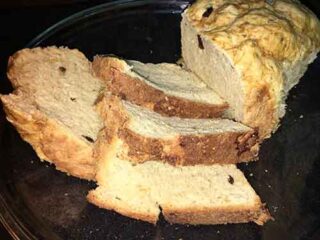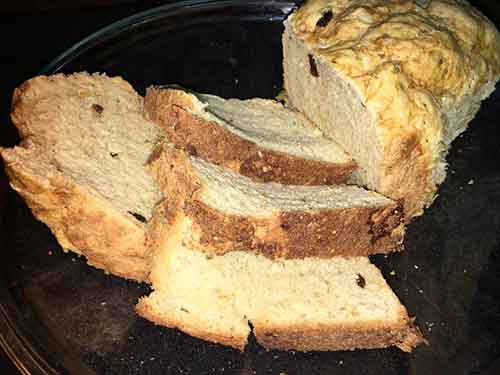Bread is one food that does not fail to make it to the dining tables of people almost every day. We are talking about the usual white bread from wheat flour.
Truly, around the world, its consumption is high. Some families get as much as 3 to 4 loaves each time they buy it.
In the last few days, you may have had few slices.
But how healthy is bread for you? Is there a side effect of eating it that you should be concerned about?
Indeed there are some health issues that eating this white flour could trigger especially when you make it a major meal often.
Side Effect Of Eating Bread
Before we look at the side effects of eating too many slices, we will look at the nutritional fact.
| Serving | 1 Slice (25 grams) |
|---|---|
| Calories | 67 |
| Total fat | 1 gram |
| Carbs | 13 grams |
| Protein | 2 grams |
| Fibre | 0.6 grans |
| Thiamine | 8% of the RDI |
| Folate | 7% of the RDI |
| Sodium | 7% of the RDI |
| Manganese | 6% of the RDI |
| Selenium | 6% of the RDI |
| Riboflavin | 5% of the RDI |
| Niacin | 5% of the RDI |
| Iron | 5% of the RDI |
The above nutritional facts for just a slice of bread show that bread could have the under-listed side effects.
While that is true, whole gran bread alternatives offer much more nutrients. But may not also be so healthy since the grain is reduced to fine particles before you prepare bread with it.
1. Bread Is Low In Nutrient
Sadly, the amount of nutrient that you get from bread is relatively low when you compare it to other foods that are whole grain, vegetables and fruits.
For instance, whole-wheat (unprocessed wheat) bread may offer you a higher amount of fiber.

On the other hand, sprouted grains are richer in beta-carotene and vitamins C and E (1)
2. Could Contain Antinutrients
There are foods that contain antinutrients that make it difficult for your body to absorb some minerals.
White flour contains phytic acid. This is a type of molecule that binds to iron, zinc, magnesium and calcium. When this happens, it prevents their absorption (2).
However, studies have found that this acid is lower in brown bread and whole grain breads than in your white bread. This is one reason some person prefer to have brown breads (3).
If your diet is right and healthy, you would get these nutrients from other sources and should not have to worry.
But people who eat diets that are high in grains and legumes, could have serious nutritional deficiencies.
3. High In Carbohydrates
Bread is a high carbohydrate food. I know someone who eats bread everyday and in no time he started gaining excess weight.
That is one of the things that could happen when you eat white bread in excess.
Most bakeries, because they want to keep their customers coming, increase the amount of sugar they add to their bread.
This makes it so unhealthy and loads your blood with sugar rush.
From the above table extracted from the U.S. Department of Agriculture, you will find that a single slice is loaded with about 13 grams of carbohydrates (4).
4. Contains Gluten
One other issue with eating bread is that it contains gluten and some persons have gluten intolerance
Gluten is a kind of protein that helps dough rise and gives it an elastic texture.
Most persons can digest this form of protein, but some cannot tolerate it.
Have You Read: Lose Weight In 15 Days Doing Nothing Else But Eat
For example, a disease – celiac is an autoimmune disorder in which gluten damages the lining of your small intestine and impairs nutrient absorption.
Also, some persons are sensitive to gluten, which can cause issues like bloating, diarrhea and stomach pain (5).
Some times people may not know they are sensitive, as the sensitivity does not show up immediately after consuming bread.
Persons who are sensitive should avoid eating white bread.
Best Alternatives
There are reports highlighting that consuming whole grain bread could offer you more health benefits.
According to studies, whole grains like sorghum flour and others may lower your risk of heart disease, diabetes, obesity and even colorectal cancer (6) (7).
While that is great about whole grains, adding unhealthy butter and other oils could diminish the nutritional value you get from it.
Adding sugar also increases the amount of calories that you get from it.
One other way to boost the nutrient in bread is to add baobab to your flour when baking it.
See how baobab changes the nutritional value in our article >> Baobab: 7 Reasons You Should Take This Super Fruit As Juice.
Another thing you can do is take few slices and eat it with enough vegetables in form of salad.
If you find this article helpful, kindly share with your friends and loved ones.
Thank you for reading.


